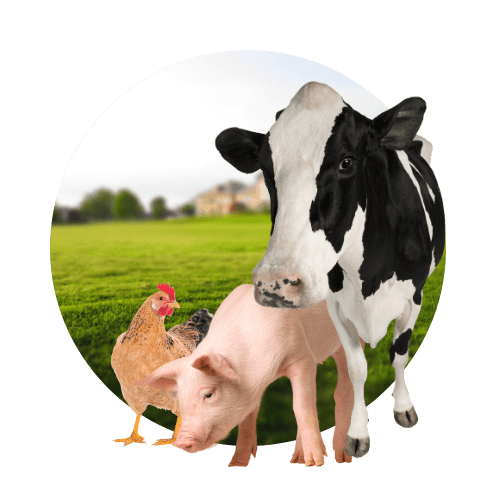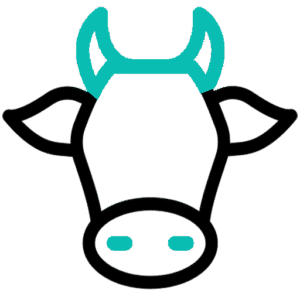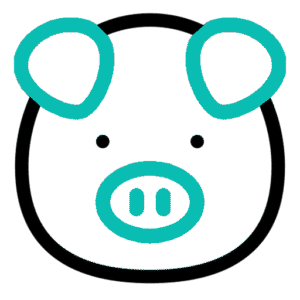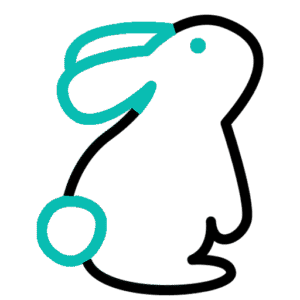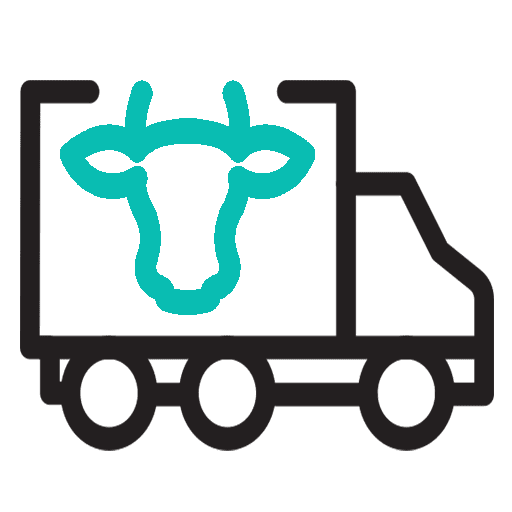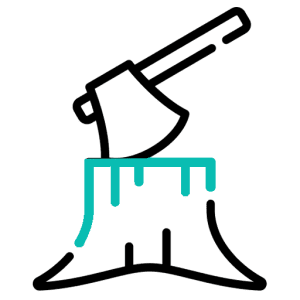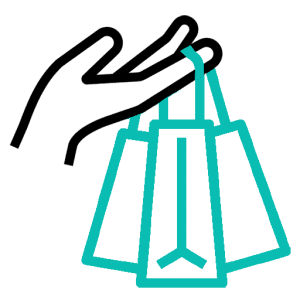Factory farming, also known as industrial farming, has become the norm in food production across the world. While it may promise efficiency and lower costs, the reality for animals in factory farms is nothing short of horrific. Pigs, who are often considered highly intelligent and social creatures, endure some of the most cruel and inhumane treatments in these facilities. This article will explore six of the most brutal ways pigs are abused on factory farms, shedding light on the hidden cruelty that occurs behind closed doors.
Gestation Crates

The process of breeding animals for food is one of the most exploitative practices in modern industrial agriculture. Female pigs, known as “sows,” are used in factory farming primarily for their reproductive capacity. These animals are repeatedly impregnated through artificial insemination, resulting in the birth of litters that can number up to 12 piglets at a time. This reproductive cycle is carefully monitored and manipulated to maximize the number of piglets produced, all while the sows themselves endure extreme physical and emotional strain.
For the entirety of their pregnancies and after giving birth, mother pigs are confined to “gestation crates”—small, restrictive enclosures that severely limit their movements. These crates are so cramped that the sows cannot even turn around, let alone engage in natural behaviors like nesting, rooting, or socializing. The lack of space means that the pigs cannot stretch, stand up fully, or even lie down comfortably. The result is a life of constant physical discomfort, stress, and deprivation.
Gestation crates are typically made of metal or concrete and are often placed in rows in large, overcrowded barns. Each sow is confined to her own cage, isolated from other pigs, making it impossible for them to interact or form social bonds. This confinement is so severe that many sows develop physical health issues like sores and infections, particularly around their legs, as they are forced to remain in one position for the majority of their lives. The emotional toll is just as severe, as pigs are highly intelligent and social animals that thrive in environments where they can move freely and engage with others. Being kept in solitary confinement for months on end causes immense psychological distress, leading to behaviors like bar-biting, head weaving, and other signs of severe anxiety.
After giving birth, the situation doesn’t improve for the mother pigs. Following their pregnancies, sows are moved to farrowing crates, which are similar to gestation crates but are used during the nursing period. These crates are designed to keep the mother pig from crushing her piglets by restricting her movements even further. However, this continued confinement, even after giving birth, only exacerbates the suffering of the sow. They are still unable to interact with their piglets properly or move freely to nurse them in a natural way. The piglets themselves, though provided with a little more room, are usually kept in crowded conditions, contributing to their own distress.
The physical and psychological toll of life in a gestation crate is profound. These crates are often used in factory farms to optimize productivity, but the cost to the animals’ well-being is immeasurable. The lack of space and the inability to engage in natural behaviors cause severe suffering, and the long-term effects of this confinement can result in chronic health problems, emotional trauma, and a reduced quality of life. The cycle of artificial insemination, confinement, and forced pregnancies is a never-ending process for the sows until they are deemed no longer productive and are sent to slaughter.
The continued use of gestation crates is a clear indicator of how factory farming prioritizes profits over animal welfare. These crates have been banned or phased out in many countries due to their inhumane nature, yet they remain legal in many parts of the world. The suffering caused by these crates is a stark reminder of the urgent need for reform in the way we treat farm animals. Advocates for animal welfare call for an end to the use of gestation crates, urging for systems that allow pigs to live in more natural, humane conditions where they can engage in their natural behaviors, socialize, and roam freely.
Castration

Castration is another cruel and painful practice that is routinely performed on pigs, particularly male piglets, in factory farms. Male pigs, known as “boars,” are typically castrated shortly after birth to prevent the development of a strong, undesirable odor known as “boar taint,” which can affect the quality of their meat. This procedure is carried out using a scalpel, knife, or sometimes even by simply using a pair of clamping instruments to crush the testicles. The procedure is usually done without any pain relief, making it an incredibly traumatic experience for the young piglets.
The pain caused by castration is excruciating. Piglets, whose immune systems are still developing, have no way to cope with the physical trauma inflicted during the procedure. In many cases, the procedure is done in a rushed, often unskilled manner, which can lead to severe injury, infection, or bleeding. Despite the immense pain, these piglets are given no anesthesia, analgesics, or any form of pain management, leaving them to suffer through the experience with no relief.
Following the castration, piglets are often left alone, trembling in pain. It is not uncommon for them to be visibly distressed, unable to stand or walk properly in the days following the procedure. Many piglets will spend the next several days lying motionless or isolated from the rest of their littermates, in an attempt to cope with the trauma. The mental anguish these piglets experience can lead to long-term psychological issues, and some may develop abnormal behaviors due to the stress and pain.
The trauma of castration also has long-lasting consequences. In addition to the immediate pain, the procedure can cause physical complications, such as infections, swelling, and scarring. These issues can affect the pig’s overall health and well-being, reducing its ability to grow and thrive. As piglets continue to grow and develop, the emotional trauma caused by castration can manifest in abnormal behavior, such as aggression, anxiety, and fear, all of which further compromise their quality of life in the factory farm environment.
The practice of castrating male piglets without anesthesia is a clear example of the disregard for animal welfare in factory farming. It highlights how these industries prioritize profit and productivity over the well-being of the animals they exploit. The procedure, which is done for convenience and to meet market demands, is a painful and unnecessary act that causes immense suffering for the animals involved. Animal welfare advocates continue to push for more humane alternatives to castration, such as pain relief or the use of breeding practices that eliminate the need for such a cruel procedure altogether.
While some countries have introduced laws requiring anesthesia or pain relief during castration, the practice is still widespread in many parts of the world. In many cases, the lack of regulation or enforcement means that millions of piglets continue to suffer in silence. Ending the practice of castration without pain relief would be a significant step toward improving the welfare of pigs in factory farms, and it is a change that must be prioritized in the fight for more humane farming practices.
Tail Docking
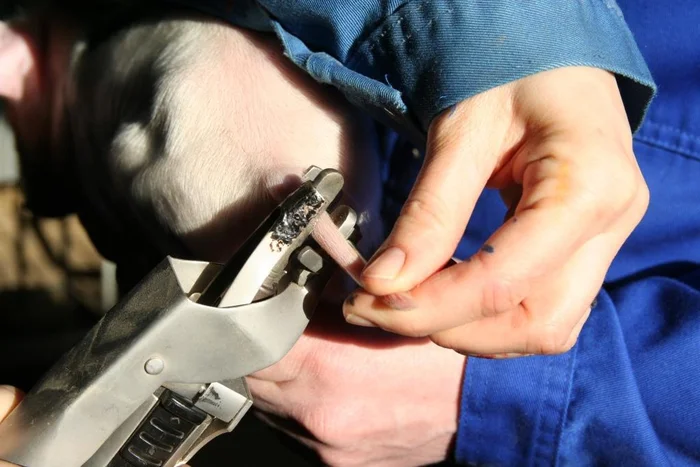
Tail docking is another painful and unnecessary procedure commonly performed on pigs in factory farming. When pigs are kept in confined, overcrowded environments, they often become highly stressed and frustrated. These conditions prevent the pigs from engaging in natural behaviors, such as rooting, foraging, or socializing with others. As a result, pigs may exhibit compulsive behaviors, such as biting or chewing on each other’s tails, a response to the immense stress and boredom they endure in these unnatural living conditions.
Rather than addressing the root cause of the problem—providing pigs with more space, environmental enrichment, and better living conditions—factory farms often resort to cutting off a pig’s tail in a process known as “tail docking.” This procedure is typically done when the pigs are still young, often within the first few days of life, using sharp tools like scissors, knives, or hot blades. The tail is cut off at varying lengths, and the procedure is performed without any anesthetic or pain relief. As a result, pigs experience immediate and excruciating pain, as the tail contains a significant amount of nerve endings.
The practice of tail docking is intended to prevent tail biting, but it fails to address the underlying issue: the pigs’ stressful living conditions. Tail docking does not eliminate the root cause of the problem, and it only adds to the physical suffering of the pigs. The pain from the procedure can lead to infections, severe bleeding, and long-term health complications. Many pigs will also suffer from phantom pain, as the nerve endings in the tail are severed, leaving them with lingering discomfort that can affect their overall well-being.
The practice of tail docking is a clear reflection of the factory farming industry’s disregard for animal welfare. Instead of creating environments that allow pigs to engage in natural behaviors and reduce stress, factory farms continue to mutilate these animals to fit a production model that prioritizes efficiency and profit over humane treatment. While some countries have introduced laws requiring pain relief during tail docking or have banned the procedure altogether, it remains common in many parts of the world.
Animal welfare advocates call for the end of tail docking and the adoption of better farming practices that focus on improving the living conditions of pigs. Providing pigs with more space, access to enrichment, and the ability to engage in natural behaviors would significantly reduce stress and the need for such cruel practices. The focus should be on creating humane environments that promote the physical and emotional well-being of animals, rather than resorting to harmful procedures like tail docking to cover up the symptoms of poor living conditions.
Ear Notching
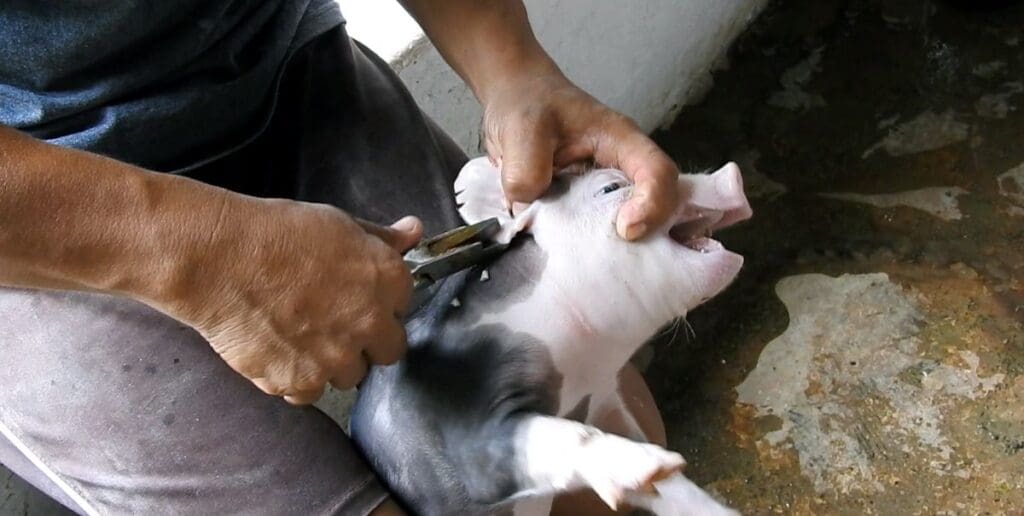
Ear notching is another painful and intrusive practice commonly performed on pigs in factory farms to identify them within the large and crowded populations. Factory farms often house hundreds, and sometimes thousands, of pigs in cramped and overcrowded conditions. To differentiate between individual pigs, workers use a process known as “ear notching,” in which they cut notches into the sensitive cartilage of a pig’s ears, creating a pattern that serves as an identification system.
In this procedure, workers typically make cuts in a pig’s ears using sharp instruments, such as knives or ear notching pliers. The notches in the right ear represent the litter number, while the left ear indicates the individual pig’s number within that litter. The notches are usually made shortly after birth, when the piglets are still young and vulnerable. The process is done without any anesthesia or pain relief, meaning that the piglets endure immediate pain and distress during the procedure.
The pain from ear notching is significant, as the ears are highly sensitive and contain numerous nerve endings. Cutting into this delicate tissue can cause bleeding, infections, and long-term discomfort. After the procedure, the piglets may experience swelling, soreness, and an increased risk of infection at the site of the notches. The procedure itself is not only painful but also carries the risk of permanent scarring, which may affect the pig’s ability to hear or even lead to deformities in the ear.
Ear notching is a clear example of the factory farming industry’s reliance on inhumane and outdated practices to manage large numbers of animals. The process does not benefit the pigs in any way and only serves to make identification easier for farm workers. It reflects a system in which the welfare of the animals is secondary to the need for efficiency and control over large populations.
While some farms have moved toward less invasive identification methods, such as electronic ear tags or tattoos, ear notching remains a widespread practice in many parts of the world. Animal welfare advocates continue to push for alternatives to ear notching, calling for more humane ways to identify and manage pigs that do not involve causing them unnecessary pain and suffering. The focus should shift to improving the living conditions of pigs, giving them more space and reducing the need for harmful procedures that cause both physical and emotional harm.
Transport

Transport is one of the most harrowing stages in the life of factory-farmed pigs. Due to genetic manipulation and selective breeding, pigs are raised to grow at an unnaturally fast rate. By the time they are only six months old, they reach “market weight” of about 250 pounds. This rapid growth, combined with a lack of space to move around, often results in physical conditions such as arthritis, joint pain, and difficulty standing or walking. Factory-farmed pigs are frequently unable to properly support their own weight, and their bodies become strained from growing too quickly in an environment where they are confined and restricted in movement.
Despite these health issues, pigs are still forced to endure the traumatic process of transport to slaughterhouses. The journey itself is brutal, as pigs are loaded onto overcrowded trucks under stressful conditions. These transport trucks are often poorly equipped to accommodate the size and needs of the pigs, with little to no space for the animals to stand, turn, or lie down comfortably. Pigs are tightly packed into these trucks, often standing in their own waste for long periods of time, making the experience even more unbearable. The lack of proper ventilation and temperature control in many trucks further exacerbates the pigs’ suffering, especially during extreme weather conditions.
As pigs are packed together in these conditions, they become more vulnerable to injuries, stress, and exhaustion. The physical strain of being confined in such cramped spaces can worsen their pre-existing conditions, such as arthritis or lameness, and in some cases, pigs may collapse or become unable to move during transport. These pigs are often left in this state, with no concern for their well-being. Many pigs suffer from dehydration, exhaustion, and extreme stress during the journey, which can last for several hours or even days, depending on the distance to the slaughterhouse.
In addition to the physical toll, the journey exposes pigs to a range of health risks. The crowded conditions foster the spread of disease and pathogens, with many pigs becoming infected with contagious illnesses during transport. As they are often subjected to poor hygiene and unsanitary conditions, pigs can become seriously ill, suffering from conditions such as respiratory infections, infections in open wounds, or gastrointestinal problems. Disease outbreaks are common in the transport process, and pigs are often left untreated, further compounding their suffering.
Furthermore, pigs are highly intelligent and social animals. The stress of being removed from their familiar environment, crammed into a truck with little to no comfort, and enduring a long journey to an unknown destination is deeply traumatic for them. The sensory overload, loud noises, and constant movement of the truck can cause extreme anxiety and fear. Pigs are known to experience panic and confusion during transport, as they are unable to understand or cope with the overwhelming stimuli they face.
Despite the widespread knowledge of the immense suffering caused by transport, it remains a common practice in factory farming. Efforts to improve conditions have been minimal, and regulations governing animal welfare during transport are often lax or poorly enforced. Transport is a critical point in the pig’s journey to slaughter, and it serves as a reminder of the disregard for animal welfare in industrial farming systems. Advocates for animal rights continue to call for more humane transport practices, including better conditions for animals, the reduction of travel time, and the implementation of stricter regulations to ensure the welfare of the animals involved.
Ultimately, transport highlights the inherent cruelty of factory farming, where animals are treated as commodities to be moved and processed with little regard for their physical or emotional well-being. To alleviate this suffering, a complete overhaul of farming practices is necessary—one that prioritizes the health, comfort, and dignity of animals throughout every stage of their lives.
Slaughter
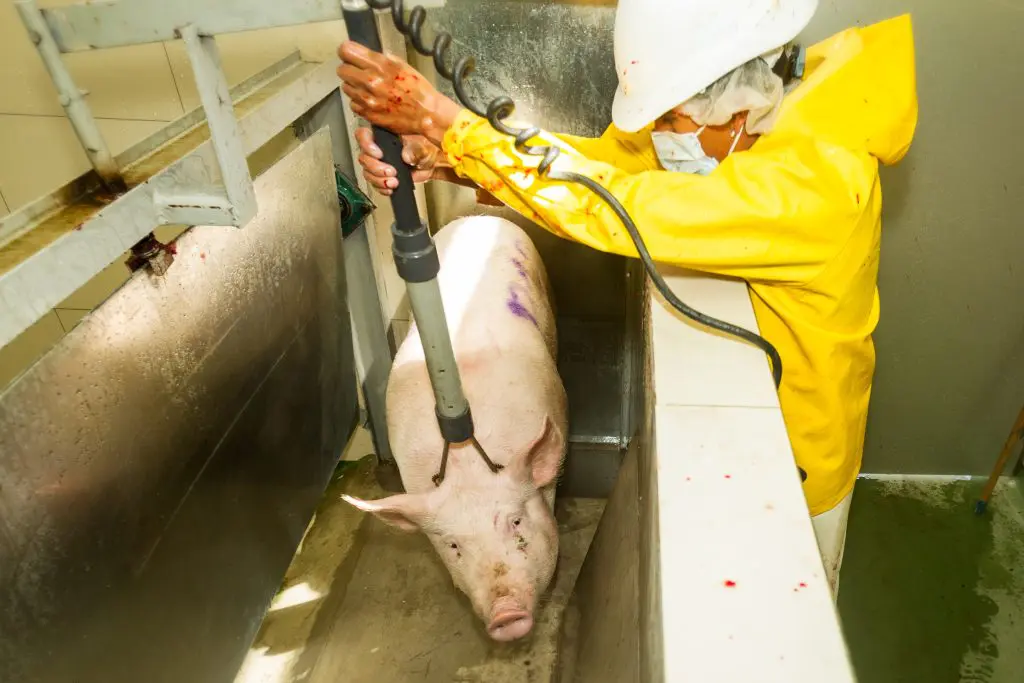
The process of slaughter is the final and most horrific phase in the lives of factory-farmed pigs, one that is marked by extreme cruelty and inhumanity. In a typical slaughterhouse, more than 1,000 pigs are killed every hour, creating an atmosphere of intense speed and high-volume production. This fast-paced system prioritizes efficiency and profit, often at the cost of the pigs’ welfare.
Before slaughter, pigs are supposed to be stunned in order to render them unconscious, but the high speed of the slaughter lines makes it nearly impossible to ensure that every pig is properly stunned. As a result, many pigs remain conscious and aware during the killing process. The stunning process, which is intended to render pigs unconscious and insensible to pain, is often poorly executed, leaving pigs fully aware of the surrounding chaos. This failure means that many pigs can still see, hear, and smell the horrors happening around them, creating an intense psychological trauma in addition to their physical suffering.
Once the pigs are stunned, their throats are slit open, and they are left to bleed out in a terrifying and excruciatingly slow manner. The pigs are fully aware of what is happening, as they continue to struggle and gasp for breath before succumbing to blood loss. This prolonged suffering is compounded by the fact that many pigs are not immediately incapacitated, leaving them in a state of terror, pain, and confusion as they slowly die.
The slaughter process exemplifies the cruelty inherent in industrial farming, where animals are treated as commodities to be processed rather than living beings with the capacity to feel pain. The failure to properly stun pigs, combined with the speed of the slaughter lines, creates an environment where suffering is inevitable. The widespread use of scalding tanks further highlights the disregard for animal welfare, as pigs are subjected to extreme pain in their final moments.
Animal rights advocates continue to call for reform, urging the implementation of more humane slaughter practices, better regulation of slaughterhouse operations, and increased oversight to ensure that animals are treated with dignity and respect. The current system of slaughter, driven by profit and efficiency, must be re-examined to address the profound suffering that pigs, and all animals raised for food, endure at the hands of industrial farming. The goal should be to create systems that prioritize the welfare of animals, ensuring that their lives and deaths are handled with compassion and respect.
What You Can Do
The cruelty pigs endure on factory farms is undeniable, but there are steps we can all take to reduce their suffering and work toward a more humane food system. Here’s what you can do:
- Adopt a Plant-Based Diet: One of the most effective ways to reduce the demand for factory-farmed animals is to eliminate or reduce animal products from your diet. By choosing plant-based foods, you help decrease the number of pigs and other animals bred, confined, and slaughtered for food.
- Advocate for Stronger Animal Welfare Laws: Support organizations and initiatives that work to improve animal welfare laws. Advocate for legislation that mandates better living conditions, humane slaughter practices, and stricter regulations on factory farms. You can sign petitions, contact your local representatives, and support movements working to end factory farming.
- Educate Others: Share information about the reality of factory farming with others. Educating friends, family, and your community about the conditions animals face on factory farms can help raise awareness and inspire change.
- Boycott Brands that Support Factory Farming: Many companies still rely on factory-farmed pigs and other animals in their supply chains. By boycotting these companies and supporting businesses that commit to cruelty-free practices, you can make a powerful statement and encourage corporations to change their practices.
- Get Involved with Animal Rights Organizations: Join animal rights groups that are dedicated to advocating for better treatment of farmed animals. These organizations provide resources, campaigns, and events that help raise awareness and create lasting change in our food systems.
Every action, no matter how small, makes a difference in the lives of animals. Together, we can work to create a more compassionate world and ensure that pigs, and all animals, are treated with the dignity and respect they deserve.



